
On this day in history events for week 25th July to 31st July.
[Read More...]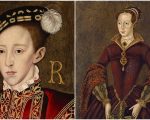
On 21st June 1553, letters patent were issued stating that King Edward VI’s heir was Lady Jane Grey, eldest daughter of the king’s cousin, Frances Brandon, Duchess of Suffolk.
Edward VI was dying, having been ill for a few months, and in the original draft of his “Devise for the Succession” he stipulated that the Crown would descend through the male heirs of Frances, Duchess of Suffolk, if Edward died childless. The problem was that there were no male heirs yet, so when Edward made a turn for the worse he decided to change the document to read: “To the Lady Fraunceses heirs males, if she have any such issue before my death to the Lady Jane and her heirs males.”
[Read More...]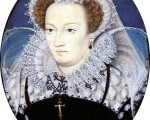
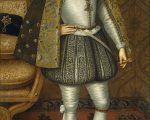
19th June 2016 marks the 450th birthday of King James I and VI of England and Scotland. Unification between the two countries, though at times strained, was brought about by James ascending the throne of England in 1603. The unification was the result of one hundred years of Tudor politics.
Back in 1503, Henry VII arranged for his eldest daughter, Margaret Tudor, to marry James IV of Scotland. Margaret during the course of the marriage gave birth to the future James V in 1512. Fighting between Scotland and England resumed. In 1523, Henry VIII attempted to unite the thrones of Scotland and England by offering his daughter, Princess Mary, as a bride for James V. This proposal was rejected. Moving forward several years, James V married the French Mary of Guise in 1538. Henry VIII had lost his third wife in October 1537 and was seeking a new bride. James V beat his uncle, Henry VIII, who was also trying to marry Mary of Guise. In 1541, James V’s mother and Henry VIII’s sister, Margaret Tudor, passed away; this effectively ended the nearly thirty-year truce between Scotland and England. A war broke out, which saw the death of James V due to illness and depression of the current state of war in December 1542.
[Read More...]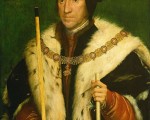
Thomas Howard was the eldest son of Thomas Howard, 2nd Duke of Norfolk, and of Elizabeth Tilney. He was the brother of Elizabeth Boleyn (née Howard) and Edmund Howard so was uncle to Queens Anne Boleyn and Catherine Howard. Howard’s father and grandfather had fought on Richard III’s side at the Battle of Bosworth but Howard was able to work his way back into royal favour by fighting for the Crown against both the Cornish rebels and the Scots in 1497. He was made a Knight of the Garter in 1510, was created Earl of Surrey in 1514 and succeeded his father as Duke of Norfolk in 1524. In September 1514 he was prominent in leading the English army in defeating the Scots at the Battle of Flodden.
[Read More...]
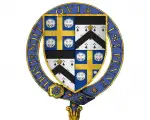
On 2 May 1536, Anne Boleyn was ordered to present herself to the Privy Council. Standing before the Duke of Norfolk, Sir William Fitzwilliam and Sir William Paulet, Anne Boleyn was arrested for committing adultery with three men: Mark Smeaton, Henry Norris and an unnamed man.
After lunch, Anne was escorted from Greenwich to the Tower of London. Popular myth tells of how Anne entered the Tower of London from the Thames through ‘Traitors Gate’. However, researchers and historians suggest that she would have arrived through the Court Gate near the Byward Tower – which was the common entrance for people of nobility and royalty. Here she was met by Sir Edmund Walsingham, the Lieutenant of the Tower, and escorted inside.
[Read More...]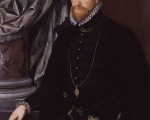

The Huguenots were French Protestants, formed as a part of the general Reformation that started in Germany because of Martin Luther and swept through the Continent. It hit France around 1517, where the movement quickly grew in popularity. The movement was particularly popular in French areas where the population was unhappy with the government or areas that were experiencing economic hardship. The name “Huguenot” is of uncertain origin; some believe the Huguenots are named after Besançon Hugues, leader of the movement in Geneva, Switzerland. Another possibility finds its roots in the German word Eidgenossen, meaning confederates bound by oath, which became aignos in France and referred to patriots living in Geneva who were against the Duke of Savoy during 1520 to 1524. In August 1523, the first martyr, Jean Vallière, was burnt at the stake.
[Read More...]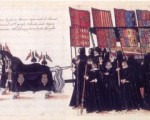
“It is not my desire to live or to reign longer than my life and my reign shall be for your good,” said Elizabeth to her parliament in 1601. Upon one of the many times parliament questioned Elizabeth about her plan of succession, she stated, “I know I am but mortal and so therewhilst prepare myself for death, whensoever it shall please God to send it.” And send it, God eventually did.
24 March, 1603. Elizabeth I, the Virgin Queen, England’s Gloriana and daughter of the great Henry VIII by the ill-fated Anne Boleyn, passed away peacefully in her sleep at Richmond Palace. She was 69 years old and had reigned for almost 45 years.
[Read More...]
On 4th March 1526, Mary Boleyn gave birth to a son she named Henry Carey. Mary Boleyn was a member of Henry VIII’s court, was married to courtier William Carey and was also the older sister of Anne Boleyn, who would become Queen of England. I believe that Mary Boleyn was also the mistress of Henry VIII from around 1522 – 1525.
Over the centuries, there has always been a great deal of debate as to who Henry Carey’s father was. Henry Carey was conceived during 1525, the year, I believe, that Mary’s relationship with Henry VIII was coming to an end. It may be possible that during the last few times the King slept with Mary she conceived. It has also been suggested that Henry would not have wished to share Mary with her husband, keeping her to himself during the entire period of their relationship.
[Read More...]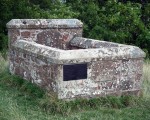
On 27th February 1545, the English forces were defeated by the Scots at the Battle of Ancrum Moor, near Jedburgh in Scotland.
The battle was part of the 1543-1550 War of the Rough Wooing, a war attempting to put pressure on the Scots to agree to a marriage match between the infant Mary, Queen of Scots and Henry VIII’s son, Edward (the future Edward VI).
[Read More...]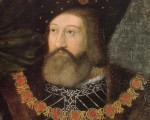
On Candlemas Eve,* 1st February 1514, Henry VIII formally elevated two men to the title of Duke. Charles Brandon, formerly Viscount Lisle, was created Duke of Suffolk, and Thomas Howard, Earl of Surrey, was created 2nd Duke of Norfolk. The ceremony took place at Lambeth and was conducted by the King.
Along with the nearly created Dukes of Suffolk and Norfolk, the only other duke in the Kingdom was Edward Stafford, Duke of Buckingham. Buckingham was a descendent of Thomas Woodstock, youngest son of Edward III. In addition to this, his mother was Katherine Woodville, sister of the late Queen Elizabeth Woodville, wife of King Edward IV. At the time, Buckingham was also the richest peer in England, with an annual income of around £6000 per year (£2,902,620.00) as well as being High Steward of England and a Privy Councillor. These positions gave Stafford a great deal of power. With royal blood running through his veins and an arrogant attitude, Buckingham was a regular member at court but it was reported that he often made those around him feel uncomfortable.
[Read More...]